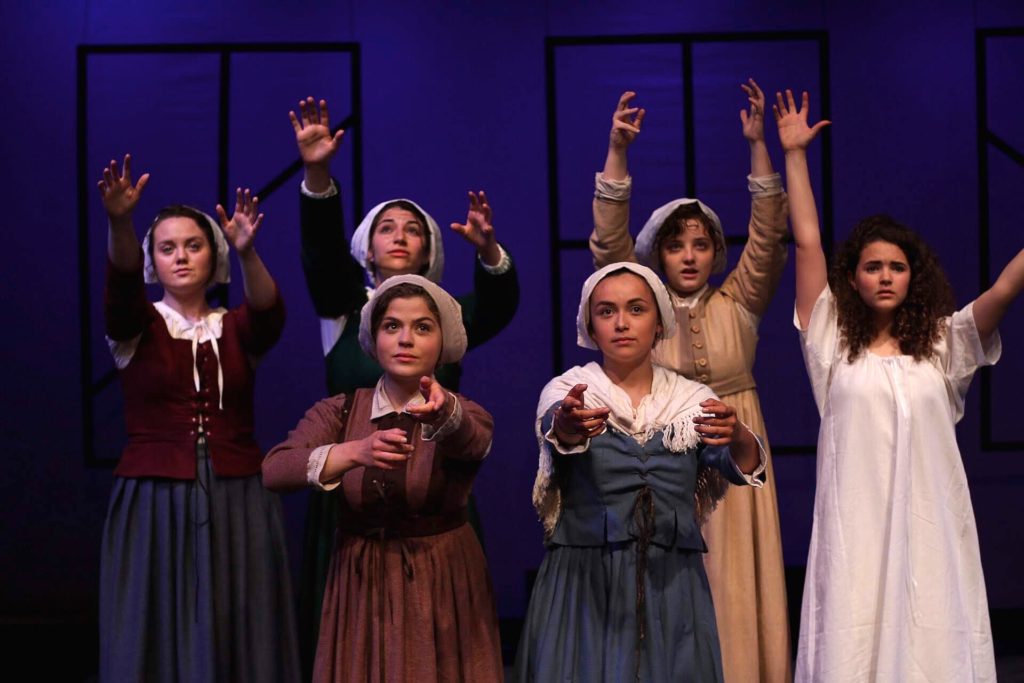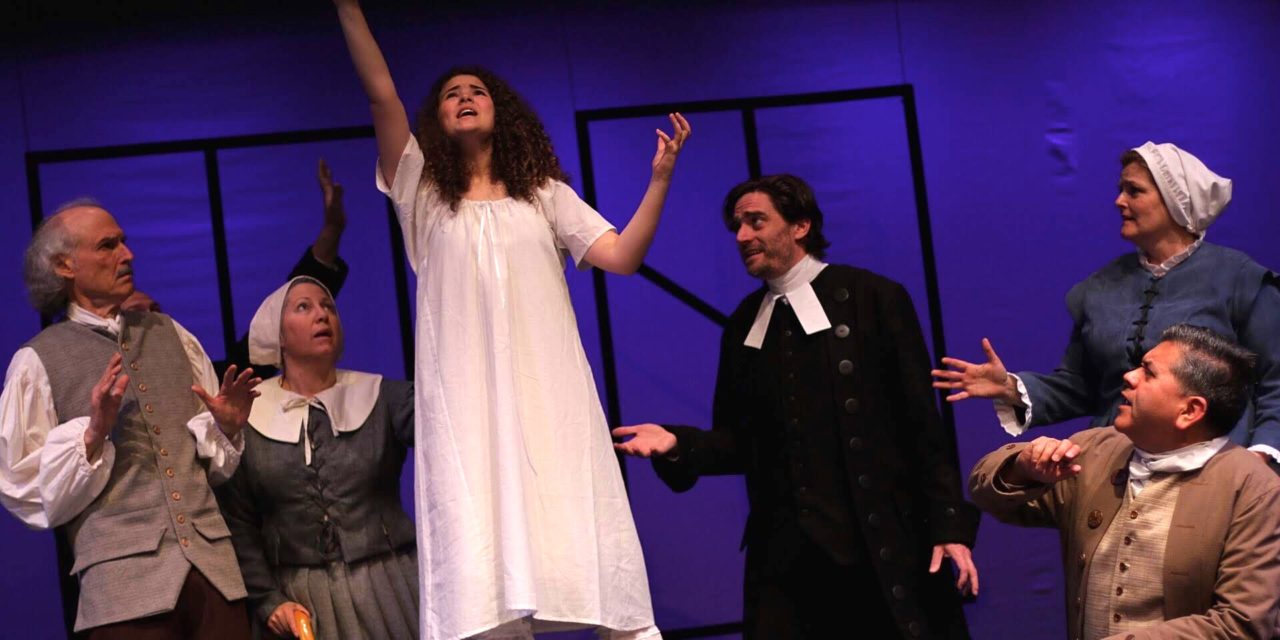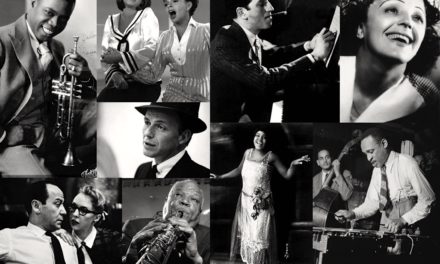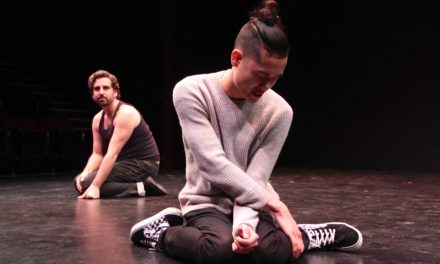(Above: Featured actors in “The Crucible” at the Cottage Theatre include, left to right, Steve Mandell, Marcee Schriver Long), Kira Carver, Kelly Oristano), Kim Fairbairn, and Brian Bull; photos by Emily Bly)
By Randi Bjornstad
Think of the Salem (Massachusetts) witch trials of 1692. Think of Wisconsin Sen. Joseph McCarthy’s blacklists and destroyed reputations of many innocent people — including many artistic types — as he and his House Un-American Activities Committee sought to ferret out any and all of the supposed Communists in our national midst in the 1950s.
Think of Arthur Miller’s play, “The Crucible,” which the playwright created as a response to the McCarthy hearings, and which he set as a semi-fictionalized version of the Salem witch trials.
It’s easy to see why. Both constituted massive and unwarranted “witch hunts,” a term that recently has reappeared — for better or for worse — in our 21st-century lexicon.

Brittany Dreier and Kory Weimer play John and Elizabeth Proctor, a couple torn by the accusations and violence that resulted from the Salem witch trials of 1692
Miller wrote “The Crucible” after traveling to Salem, Mass., in 1952, where he pored over transcripts from the original trials, and finished it about a year later. In his play, the witch hunt begins with accusations against a group of young women who supposedly were trying to contact spirits of the dead. In an attempt to deflect attention from their own alleged actions, they began instead to accuse other people, mostly women in their community, of being witches.
The crux of the issue, Miller told The New Yorker magazine in an article that appeared in 1996, was that “the question was not the acts of an accused but his thoughts and intentions.”
Like the delirium that propelled the Salem witch trials in the 17th century, the 20th-century parallel revealed to Miller the experience of “being unable to believe that the state has lost its mind.”
In both the Salem and Congressional cases — and maybe even today — the result was to pit ordinary people against each other until trust and long-cherished traditions of tolerance, fairness and even legal principles were abandoned in favor of creating doubt, casting blame, destroying relationships and communities, and exacting punishment.
“The Crucible” won the Tony Award for Best Play in 1953. Since then, it has been among the most revered of serious, soul-searching plays.
Joel Ibáñez directs the Cottage Theatre’s version, with costumes by Rhonda Turnquist, lighting by Amanda Ferguson, and set design by Ibáñez and Kory Weimer.
Weimer also appears as one of the primary characters in the play, along with Brittany Dreier and Courtney Roberts. the cast also includes Brian Bull, Kyle Carillo-Enders, Kira Carver, Kim Fairbairn, Dale Flynn, Keely Galbreath, Sheldon Hall, Aimee Hamilton, Steve Mandell, Aislyn Morrill, Bil Morrill, Kelly Oristano, James Scoggins, Marcee Shriver Long, Justin Stoke, and Natalie Tichenor.
“The Crucible” runs from 11 performances, from June 8 through 24.
Arthur Miller’s “The Crucible”
When: 8 p.m. on June 8-9, 14-16, and 21-23; and 2:30 p.m. on June 10, 17, and 24
Where: Cottage Theatre, 700 Village Drive, Cottage Grove
Tickets: $25 for adults, $15 for youths 18 years and younger, available at the box office from 10 a.m. to 2 p.m. Wednesday through Friday and one hour before performances, or online at cottagetheatre.org

Women in the Cottage Theatre cast of “The Crucible” include (front) Courtney Roberts and Keely Galbreath, and rear, Aimee Hamilton, Natalie Tichenor, Aislyn Morrill, and Kira Carver












